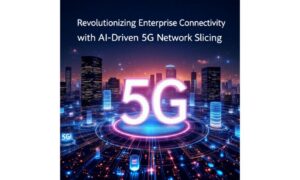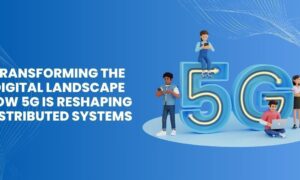Welcome to the future of connectivity! Technology continues to evolve at an unprecedented pace, and one of its most exciting advancements is undoubtedly the arrival of 5G. This revolutionary fifth-generation mobile network promises lightning-fast speeds, ultra-reliable connections, and incredibly low latency – opening up a world of possibilities for both individuals and industries alike. In this blog post, we will explore the role of 5G in advancing connectivity worldwide. Get ready to dive into the realm where boundaries vanish, innovation thrives, and our digital lives are forever transformed by this game-changing technology.
Introduction to 5G Network Technology
The 5G network is the next generation of wireless networking technology, offering significantly higher speeds and reduced latency compared to previous generations. Early deployments of 5G are already underway in select markets, with wider rollout expected in the coming years.
While the full potential of 5G is still being explored, it is expected to enable a wide range of new applications and use cases, from connected cars and smart cities to virtual reality and augmented reality. 5G will also play a critical role in enabling the Internet of Things (IoT), as billions of devices are connected wirelessly to each other and to the internet.
In order to realize the full potential of 5G, major investment is required in both infrastructure and R&D. wireless operators are working closely with equipment manufacturers, chipmakers, software developers, and standards organizations to continue advancing 5G technology.
Current applications of 5G Networks
The fifth generation of mobile networks (5G) is the next major evolution in wireless technology. 5G will enable a new era of mobile connectivity, with faster speeds, lower latency, and more capacity than ever before. 5G will provide the foundation for a variety of new applications and use cases that are not possible with existing 4G networks.
Some of the most exciting potential applications of 5G networks include:
1. Enhanced Mobile Broadband: 5G will provide significantly enhanced mobile broadband experiences, with download speeds of 1 Gbps or higher and latencies below 10 milliseconds. This will enable new applications such as high-definition video streaming, virtual reality, and augmented reality.
2. Ultra-Reliable Low-Latency Communications: 5G will enable ultra-reliable communication with extremely low latencies, making it ideal for mission-critical applications such as industrial automation, autonomous vehicles, and remote surgery.
3. Massive Machine-Type Communications: 5G will support massive numbers of connected devices using machine-to-machine communications (M2M). This will enable new Internet of Things (IoT) applications such as smart cities and connected homes.
4. Fixed Wireless Access: 5G can be used to deliver high-speed wireless broadband to homes and businesses without the need for wired infrastructure such as fiber optics. This could provide a competitive alternative to traditional fixed line broadband providers such as cable companies or DSL providers.
5. Connected Cars: 5G will enable connected cars, with features such as enhanced vehicle safety and autonomous driving. This could revolutionize the automotive industry by making vehicles smarter and more connected than ever before.
Characteristics of 5G Technology
1. Increased Capacity – 5G technology will offer much higher capacity than 4G, allowing for more devices to be connected at any given time. This increase in capacity is made possible by the use of advanced MIMO and OFDM technologies.
2. Increased Speed – 5G technology will also offer significantly higher speeds than 4G, with peak speeds of up to 10 Gbps. This will allow for extremely fast downloads and responsive real-time applications such as augmented reality and virtual reality.
3. Low Latency – One of the most important features of 5G technology is its low latency, which is essential for applications that require quick responses such as gaming and autonomous vehicles. Latency is reduced through the use of advanced techniques such as carrier aggregation and beamforming.
4. Improved Efficiency – 5G technology is designed to be much more efficient than 4G, both in terms of power consumption and spectrum utilization. This will result in lower costs for operators and improved battery life for users.
5. Enhanced Security – With the increasing importance of data security, 5G technology comes with enhanced security features to protect user data. These include end-to-end encryption, device identity management, and intrusion detection/prevention systems .
Benefits Of Using 5G Networks
The global mobile network is evolving. 5G will be the next big step in this evolution, providing faster speeds, lower latency, and more reliable connections.
When it comes to download speeds, 5G is expected to be up to 100 times faster than 4G LTE. This will enable new use cases that require large amounts of data to be transmitted quickly, such as high-definition video streaming and virtual reality.
Latency is the time it takes for a packet of data to travel from one point to another. 5G networks are expected to have latency of less than 1 millisecond, which is unnoticeable to humans. This low latency will open up new opportunities for applications that require real-time responsiveness, such as autonomous vehicles and augmented reality.
5G will also provide more reliability than previous generations of mobile networks. This means that users will be able to connect to the network even in densely populated areas where there is a lot of congestion.
The benefits of 5G will not only be felt by individual consumers, but also by businesses and industries that rely on mobile connectivity. For example, factories that use robots or other automated equipment can take advantage of the higher speeds and lower latency of 5G to improve efficiency and productivity.
Advantages for Businesses using 5G technology
The advantages of 5G technology for businesses are many and varied. Perhaps the most obvious is the increase in speed and capacity that 5G offers. This means that businesses can move more data, more quickly, and with less latency than ever before. 5G also offers businesses new opportunities for connectivity, including the ability to connect to a wider range of devices and services. Additionally, 5G technology is more energy-efficient than previous generations of wireless technology, which can lead to reduced operating costs for businesses.
Challenges Facing the Implementation of 5G Networks
One of the key challenges facing the implementation of 5G networks is the high cost of investment. For telcos, this means not only the cost of upgrading existing infrastructure but also the cost being incurred in terms of new spectrum licenses. This is a major barrier to entry for many players, particularly in developing markets.
Another challenge is the lack of standardization around 5G technology. This has led to a fragmented market with a variety of incompatible products and solutions. This makes it difficult for telcos to choose the right partners and vendors, and deploy a consistent 5G experience across their networks.
There are still some doubts about the business case for 5G. While there is no doubt that 5G will bring significant benefits in terms of speed and capacity, many telcos are still hesitant to make such a large investment without a clear understanding of how they will monetize this new technology.
Conclusion
Overall, 5G technology has the potential to revolutionize the way we connect globally and improve both economic growth and global competition. With its ability to transfer data at speeds never seen before, it can enable more efficient communication between countries in areas such as finance, health care, industry, education and beyond. It is already starting to be deployed all over the world with promising results that look set to completely change how societies live and interact with each other for years to come.


































